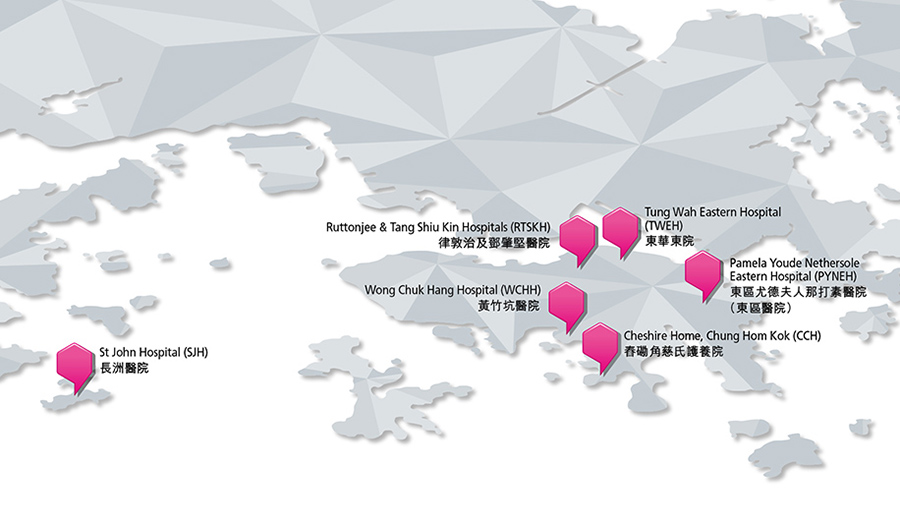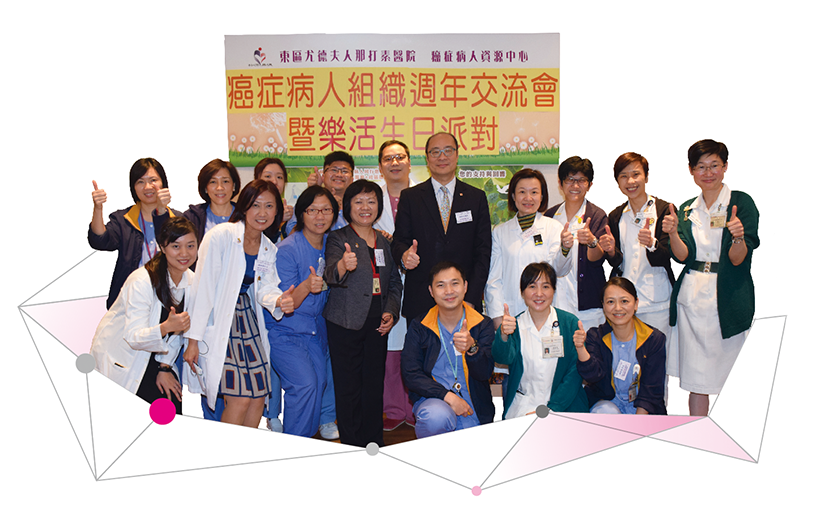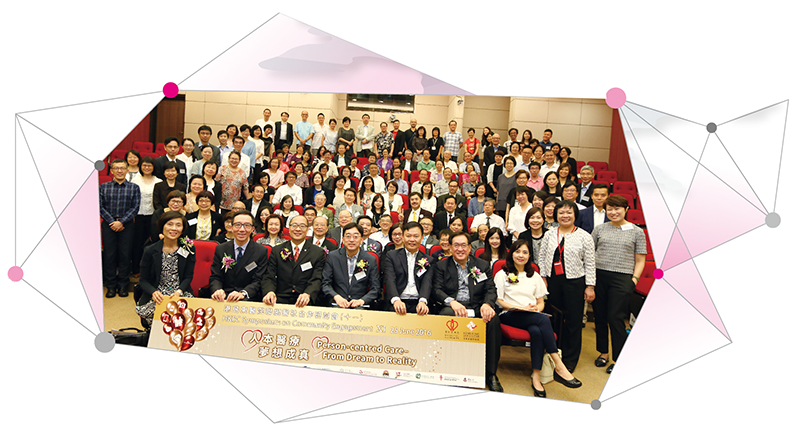Hong Kong East Cluster (HKEC)

| Number of general outpatient clinics | 12 |
| Throughput | |
| Number of beds | 3,112 |
| Patient discharges* | 190,701 |
| A&E attendances | 227,465 |
| Specialist outpatient attendances (clinical) | 827,500 |
| General outpatient attendances | 607,799 |
| Full-time equivalent staff | 8,078 |
* Total inpatient, day patient discharges and deaths
HKEC has been optimising service capacity, improving service accessibility and retaining talents against the growing demand and manpower shortage. Our people are the key to deliver quality patient services. Staff training and development remained one of the main focuses of HKEC. RTSKH Accident and Emergency Training Centre (AETC) was granted Silver Award by the American Heart Association in recognition of its exemplary resuscitation and emergency care training programmes in December 2016 and has taken over the Post-Basic Simulation Training for HA nurses in June 2016.
Despite escalating service demand, HKEC is committed to high standard service quality and patient safety. PYNEH and TWEH completed the Periodic Review of Hospital Accreditation in June 2016. The Cluster Catering Department strived to ensure food safety and achieved the ISO 22000:2005 – Food Safety Management System certification in April 2016. RTSKH renovated its Special Accommodation Ward in January 2017, incorporating elderly-friendly design and facilities.
Services in pressure areas were strengthened through enhancing capacity in acute surgical beds and operating theatre sessions per week in PYNEH in October 2016. TWEH was awarded the “Social Capital Builders Awards” in 2016 by the Labour and Welfare Bureau for its excellent support to the carers of chronically ill patients. HKEC adopts advanced technologies to modernise patient service. A new upper limb robotic device “Hand of Hope” was installed in December 2016 in Tseng Cheng Tseng Pei Integrated Community Rehabilitation Centre in TWEH to facilitate patients’ hand rehabilitation. Department of Orthopaedics and Traumatology in PYNEH was the first in Hong Kong to successfully manufacture and implant a replica of a talus with 3D printing technology for a patient.


